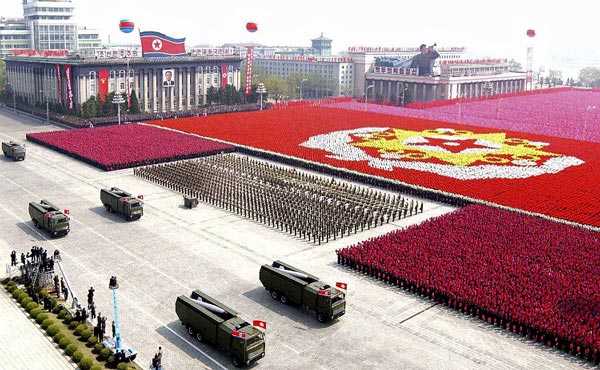
Throughout the 1990s, US military planners assumed that a North Korean surprise attack on South Korean and US forces might succeed, at least in terms of achieving its intermediate objective of seizing Seoul. In order to accomplish this goal, North Korea would employ its two main advantages: mass artillery – already deployed within range of Seoul – and heavy armored forces, deployed immediately north of the DMZ. In theory, a massive artillery barrage would stun defenses and open corridors for armored forces to punch through and capture Seoul before allied forces could react. In the event that coalition forces lost Seoul, US military planners estimate that approximately six US ground combat divisions including marine and army units, ten air force wings, and four to five carrier battle groups, would be required to liberate the South Korean capital.
In the wake of the events starting in 2012 that led to the latest Korean crisis, government officials and security analysts in the region say North Korea is scaling back its campaign of threats and showing signs it wants to ease tensions with South Korea and the U.S. That assessment, gaining credence among policymakers in recent days, does not mean North Korea will soon agree to talks or that the long-term threat posed by its weapons program has been reduced. But officials say they are encouraged by a shift over the past week in the government’s rhetoric, which, though still venomous, now includes hints about reconciliation.
While things are on a stand still after staring down the barrel of North Korea’s nuclear arsenal, intercontinental missiles, and biological and chemical weapons, its time to give pause and ponder on the global threat of the military capability of North Korea. This paper gives a brief background of North Korea’s military capability and analyzes the potential threat of its capability to regional and global security.
I. Introduction
II. Conventional Military Capability
i. Military Manpower
ii. Land Warfare Capability
iii. Air Warfare Capability
iv. Naval Warfare Capability
v. Power Index
vi. Nuclear Capability
III. Analysis
IV. Conclusion
To view/purchase or for more questions, please contact International Center for Strategic Analysis (ICSANA) at This email address is being protected from spambots. You need JavaScript enabled to view it. or at +971 4 4528822.
To read the remainder of this article, please sign up for the site Membership Plus account, - Don’t wait, be one of the first group to view this article.
Sign up now for 12 great months of the best information tips this article and strategies available on the Internet. With ICSANA membership you gain exclusive access to premium content only available to our site members. Plus, our monthly newsletter is chock full of excellent advice from the experts.
Learn more about ICSANA Membership Packages.



